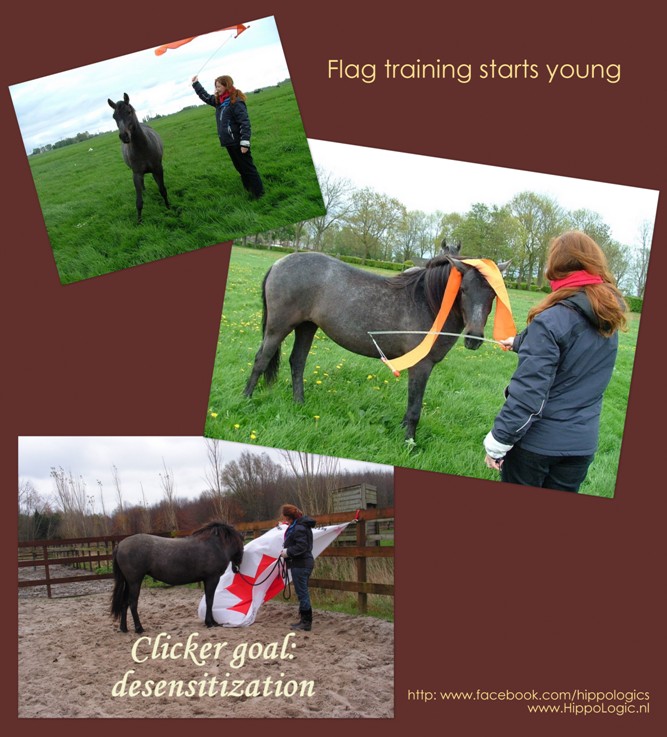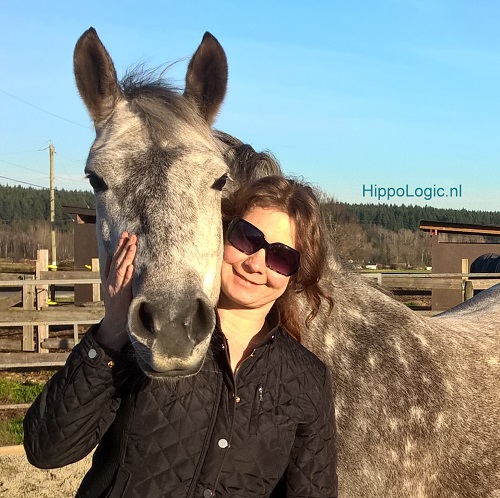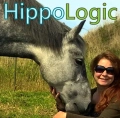In this series I will be sharing 6 interesting facts I didn’t know about when I started using positive reinforcement in training animals. This is part 3.
Some of these are common misunderstandings people have about clicker training while others are facts most equestrians don’t know at all.
The goal of this blog is to help more people understand how well positive reinforcement (R+) works in training our horses. I want every one to know that clicker training offers more great benefits besides training your goal behaviour. Positive side-effects you won’t get in negative reinforcement (R-) based training methods (traditional and natural horsemanship). I wish I had known these benefits earlier in life.
#3 Clicker training can improve the bond between horse and trainer

Since the horse is at liberty and not restrained while being trained he has much freedom. The horse has the freedom to walk away when he is bored or when he looses interest or concentration. The horse is also allowed to express his emotions, without repercussion. In positive reinforcement training the trainer wants to know how the horse feels. This all contributes to a good relationship with your horse. You get to know each other really well.
Positive reinforcement to desensitize your horse
Example: when you want to lead a horse past a scary object at liberty with a target it will be clear where the horse starts to get nervous. He will stand still in order to investigate or he will get tense. Since there is no room for coercion in positive reinforcement training you have to think of ways to make the horse at ease and give him confidence that the scary object is not so scary. You can ‘meet him where he is at’.
What most of us learned to do

If we have a horse on a lead lope and we encounter something that the horse finds scary what do we do? In most cases the first thing we do is to encourage the horse to walk on with a gentle pull on the rope. What is the most common reaction if the horse balks? Pull a bit harder! So on top of ‘that scary thing’, the person doesn’t calm the horse down by pulling the horse. It can even cause more stress and pulling hard on a lead rope can also hurt the horse. Not something you want to add to an already stressful situation, right?
Building trust
Usually if you let your horse investigate scary objects as long as he likes, his fear will decrease pretty quickly. This is not easy; giving your horse even only 15 seconds to investigate can feel like a lifetime.
If you connect a positive, wonderful association (click and treat) to something scary, your horse will learns it is OK to stand still and look at scary objects. He learns quickly that it can be rewarding to investigate new and potentially dangerous objects.
The next step will be teaching your horse that a click and treat will follow if he passes new objects. First it’s OK looking at the the objects while passing by, later on you can click and reinforce if he ignores new objects altogether.
Since new objects are already connected with positive associations (curiosity is a good feeling, positive reinforcement) you have built trust. The horse has learned that he can trust you (you stay calm and patient and you give click & treats) and that it is OK to express his feelings and emotions. He doesn’t have to worry about your reaction in scary situations!
Read more about how can improve your bond with your horse in training: 5 Tips to Improve the Bond with Your Horse
Read the other articles in this series:
part 1 of 6 Things You Might Not Know About Clicker Training
part 2
part 3
part 4
part 5
part 6
Share the passion!
If you want to share this blog on your social media, use one of the share buttons below. It’s very much appreciated!
Do more with Clicker Training!
Are you a compassionate horse owner who wants to build a strong friendship with your horse? Would you like to understand your horse better and help your horse to understand YOU better? Get access to high quality online training and a fabulous, supportive R+ community in our HippoLogic Clicker Training Academy. Check out the link!
Want to do more with Clicker Training?
Join the HippoLogic Academy! I coach and support you personally getting your dream results with positive reinforcement, so that you can bond with your horse in the process. Create a connection build on mutual trust and understanding, a clear two-way communication built on love. Click the image to go access the application form ↓

Not sure? Start with a free clicker training assessment to get taste of what it feels like to work with me. When you have a specific struggle that you want to overcome, don’t hesitate to contact me.
In this assessment you’ll discover what’s holding you back from accomplishing the things you want with your horse. After our conversation you’ll know exactly what to do, in order to move forward towards your goals.
Happy Horse training!
Sandra Poppema, B.Sc., founder of HippoLogic & HippoLogic Clicker Training Academy

Join us!



 If your horse goes ‘over threshold’ due to trigger stacking it means the horse can’t coop with the stimuli (the unfamiliar or new thing in the arena, the fact that he can’t investigate, that he is forced to approach it and so on) and he goes into flight (sometimes fight) response in order to release the tension.
If your horse goes ‘over threshold’ due to trigger stacking it means the horse can’t coop with the stimuli (the unfamiliar or new thing in the arena, the fact that he can’t investigate, that he is forced to approach it and so on) and he goes into flight (sometimes fight) response in order to release the tension.







 Horses are curious by nature and when you let him run away, he will feel safe and find the right distance that feels safe for him to inspect the object. Then he wants to come closer and see what it is. If you can encourage your horse with positive reinforcement to examine the new thing, his curiosity is triply rewarded. First of all because he satisfies his own need to know that it is safe, second because you reinforced him to be curious and third by giving him the freedom to run away to lower his stress. Instead of pushing him to move towards something scary while he is not yet ready to do so.
Horses are curious by nature and when you let him run away, he will feel safe and find the right distance that feels safe for him to inspect the object. Then he wants to come closer and see what it is. If you can encourage your horse with positive reinforcement to examine the new thing, his curiosity is triply rewarded. First of all because he satisfies his own need to know that it is safe, second because you reinforced him to be curious and third by giving him the freedom to run away to lower his stress. Instead of pushing him to move towards something scary while he is not yet ready to do so.
You must be logged in to post a comment.